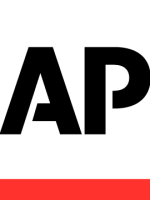WASHINGTON — President Donald Trump on Wednesday reversed course on plans to wind down his COVID-19 task force, attempting to balance his enthusiasm for "reopening" the country with rising infection rates in parts of the nation.
The task force controversy was emblematic of an administration — and a country — struggling with competing priorities of averting more death and more economic suffering. Trump appears intent on persuading Americans to accept the price of some lives lost as restrictions are eased, concerned about skyrocketing unemployment and intent on encouraging an economic rebound ahead of the November election.
Democrats criticized Trump's reopening strategy Wednesday, saying more federal support for testing and contact tracing is needed. Deaths and infection rates outside of New York, the epicenter of the coronavirus, are rising even as many states move to ease lockdown restrictions.
One day after the administration suggested that its work would be done around Memorial Day, Trump said the White House task force of experts and senior government officials would continue after all, indefinitely, with its focus shifting toward rebooting the economy and the development of a vaccine.
"I thought we could wind it down sooner," Trump said, adding, "I had no idea how popular the task force is."
A White House official, speaking on the condition of anonymity to discuss internal thinking, acknowledged that signaling on Tuesday that the task force was preparing to shut down had sent the wrong message and created a media maelstrom.
While the task force has already been meeting less frequently, its medical experts, particularly Drs. Anthony Fauci and Deborah Birx, have emerged as among the most trusted voices on the virus response. The Tuesday announcement of ending the task force sparked concerns that they would be sidelined as the outbreak continues amid fears of a fresh wave of illness in the fall.
Trump said Tuesday he would still seek their counsel, regardless of the fate of the task force.
"It is appreciated by the public," he said of the task force.
Trump said membership in the group would change as the nature of the crisis evolves.
In the Wednesday tweets Trump said "the Task Force will continue on indefinitely." He added that the White House "may add or subtract people to it, as appropriate. The Task Force will also be very focused on Vaccines & Therapeutics."
Trump made himself Exhibit A for reopening the country with his Tuesday visit to an Arizona face mask factory, using the trip to demonstrate his determination to see an easing of stay-at-home orders even as the coronavirus remains a dire threat. Trump did not wear a mask despite guidelines saying they should be worn inside the factory at all times.
"The people of our country should think of themselves as warriors. We have to open," Trump declared as he left Washington on a trip that was more about the journey than the destination.
As Trump pressed the nation to reopen, Dr. Tom Frieden the former director of the Centers for Disease Control and Prevention testified Wednesday on Capitol Hill that the "war against COVID will be long and difficult."
"We're just at the beginning of this pandemic and must focus on the future," he testified, predicting there will be 100,000 deaths by the end of the month. As bad as the crisis has been, he said, "it's just the beginning."
In Arizona, Trump acknowledged the human cost of returning to normalcy.
"I'm not saying anything is perfect, and yes, will some people be affected? Yes. Will some people be affected badly? Yes. But we have to get our country open and we have to get it open soon," he said.
In an interview Wednesday, Democratic House Speaker Nancy Pelosi criticized Trump's approach. "Death is not an economic motivator, stimulus," she said. "So why are we going down that path?"
"Everyone's eager to get out," she added. "To unlock the lockdown is to test, trace, treat as well as isolate social distancing."
Ahead of the Tuesday visit Trump had said he would don a face mask if the factory was "a mask environment," but in the end he wore only safety goggles during a tour of the Honeywell facility. Nearly all factory workers and members of the press as well as some White House staff and Secret Service agents wore masks. Senior White House staff and Honeywell executives did not.
The CDC has recommended that all Americans wear cloth masks when they can't socially distance. In the area where Trump spoke, a large video monitor listed safety guidelines, one of which said, "Please wear your mask at all times."
Pelosi suggested Wednesday that Trump's resistance to wearing a mask is "a vanity thing."
"Apparently the president has washed his hands of this," Pelosi said. "The task force is here today, gone tomorrow. No mask."
Vice President Mike Pence created a stir recently when photos showed him maskless in a visit to the Mayo Clinic surrounded by hospital officials and doctors all wearing masks. He wore a mask at an event a few days later.
Separately, Trump was asked on Tuesday about his statements in February playing down the threat of the virus. In an interview with ABC, he asserted that medical experts also had underestimated the risk.
He added, "I want to be optimistic. I don't want to be Mr. Doom and Gloom. It's a very bad subject. I'm not looking to tell the American people when nobody really knows what is happening yet, 'Oh this is going to be so tragic.'"




